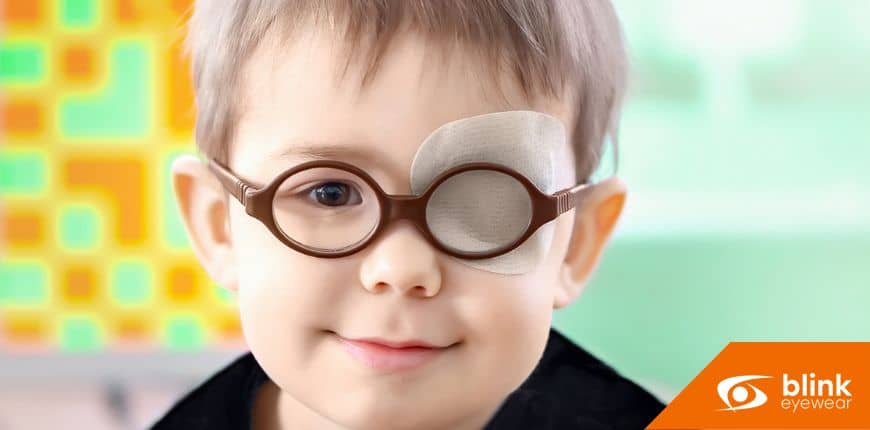
Vision therapy is an in-office, optometrist-approved therapy that aims to train the eyes to improve vision. While some eye disorders are caused by issues within the structure of the eyes, other eye conditions are caused by the eye muscles that control the movement of the eyes. For eye conditions related to eye muscles, as well as some conditions related to focus, vision therapy can be used to help correct vision by training the eyes. If during an eye exam you or your child are diagnosed with an eye condition that may benefit from this treatment, your optometrist may recommend vision therapy.
Your Optometrist May Suggest Vision Therapy For These Conditions
Binocular Dysfunction
The word “binocular” refers to the use of both eyes, which is how humans are meant to see. With binocular vision, both eyes work together to send signals to the brain that create a clear, three-dimensional image. When binocular vision is working correctly, the eyes should move at the same angle at the same time. When a person has a binocular dysfunction, their eyes do not work together to create a singular clear image. Instead, both eyes will focus on slightly different spots and create their own image. This often leads to blurry vision, double vision, a lack of depth perception, dizziness (and sometimes associated nausea), and difficulty judging speed. Your optometrist may recommend vision therapy to correct binocular dysfunction by training the eyes to work together and focus on the same item.
Amblyopia
Often called lazy eye, this condition develops when one eye is weaker than the other. Because of this, the brain favours the stronger eye and ignores the weaker one, which causes that eye to wander or become lazy. For many years, optometrists have been using a method called patching to help reduce amblyopia symptoms. The idea behind patching is that by covering the stronger eye, the brain is forced to use the weaker eye and prevent that eye from losing vision. While this does work, it can come with risks. By training the eye independently, patching risks causing the eyes to not develop their binocular function. Patching can also be difficult for children (which is the largest demographic of people with amblyopia), as the patch may be irritating or hard for the child to maintain. Instead, optometrists may recommend vision therapy to train both of the eyes together so that they will function with accurate binocular vision. Vision therapy has been shown to reduce eye suppression of the weaker eye while enhancing coordination and depth perception.
Strabismus
More commonly known as crossed eyes, this condition occurs when the eyes do not line up. Either one or both eyes may turn in, out, up, or down. This can cause binocular dysfunction or the brain will choose to ignore one of the eyes and cause amblyopia. When your optometrist uses visual therapy to address strabismus, they will help to train your eye muscles to work together for eye movement coordination.
Focusing Problems
When you switch from looking at an object that is close to one that is farther away, your eyes automatically adapt so that you can see objects by focusing on different distances. For people with focusing problems, they are either unable to make this vision adjustment or it takes time for their eyes to adjust. For the eyes to change focus from near to far objects and vice versa, the lens needs to be able to quickly expand or contract. This is performed by a muscle in the eye called the ciliary muscle, also referred to as the focusing muscle. Your optometrist may recommend vision therapy to help train this muscle by using techniques that make the focusing system work and then relax. This will build muscle and help the eye learn to coordinate focusing.
Eye Movement Dysfunction
Eye movement problems are surprisingly common. They encompass issues of moving your eyes to follow an object, the inability to quickly look from one point of focus to another, or difficulty accurately jumping from one target to another (such as moving from word to word when reading). Your optometrist may recommend vision therapy to practice using your saccadic (movement between two objects) and pursuit (the following of an object) eye movements.
Learn more about vision therapy and what it involves by reading What Is Vision Therapy?
Vision Therapy From A Calgary Optometrist
Vision therapy is a non-invasive form of treatment that can help many people who otherwise have no way of treating their vision disorders. This form of highly researched and advanced vision technology is a fantastic opportunity for vision correction to improve quality of life. If you or your child has any of the listed eye conditions or if you have an eye condition that cannot be corrected using other methods, ask your optometrist about vision therapy. This eye treatment is not available at every optometrist clinic as your optometrist will need special training in this field, but vision therapy is offered at Blink Eyewear in Calgary. Our optometrists are trained to administer vision therapy and will work with you or your child to correct any vision issues.
With three convenient locations in Crowfoot in NW Calgary, West Springs in SW Calgary, and Creekside in NW Calgary, Blink Eyewear can offer you great optometry services throughout the city. To book an appointment with Blink Eyewear, call 1-403-516-2292 or fill out the online contact form.